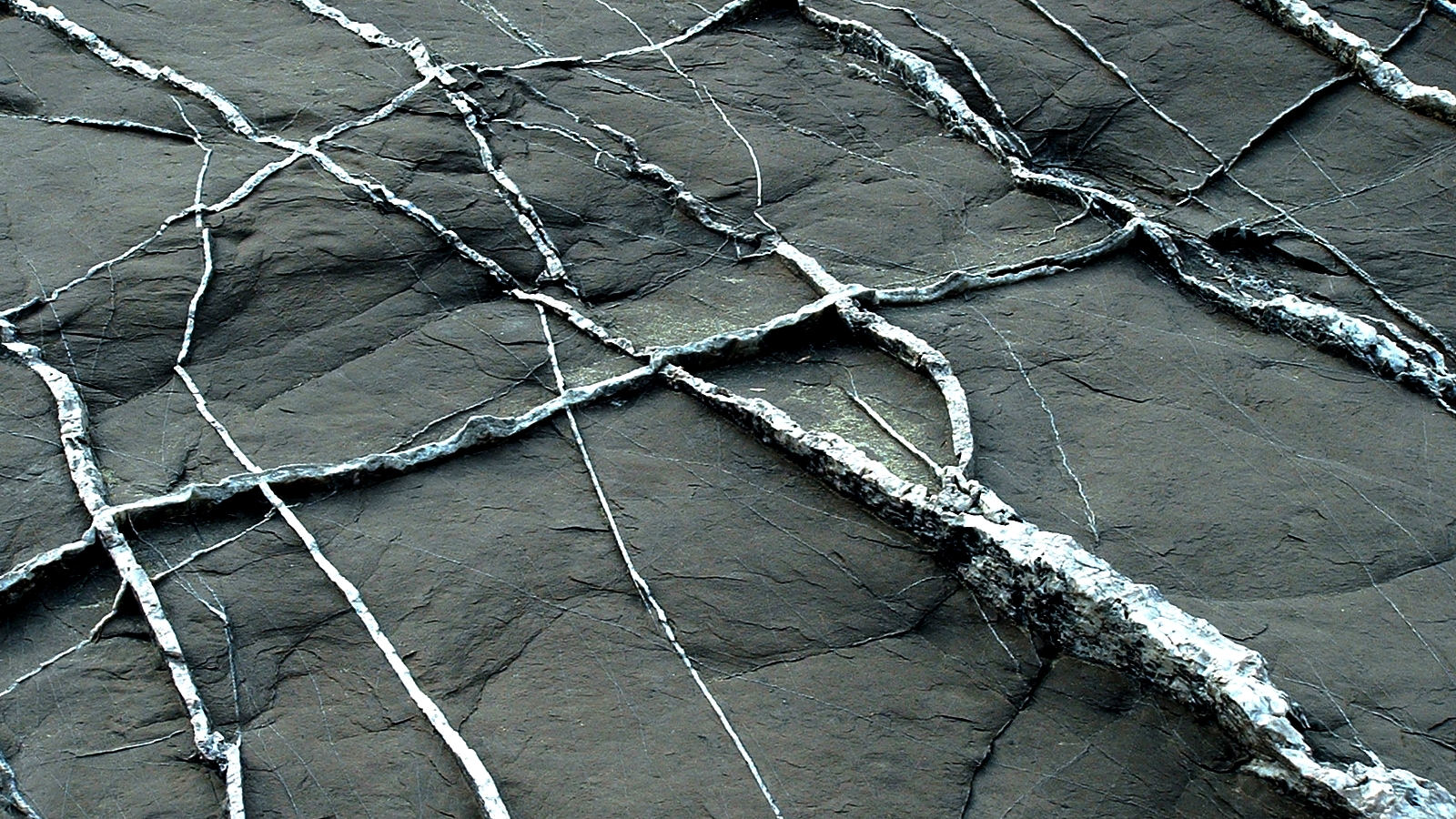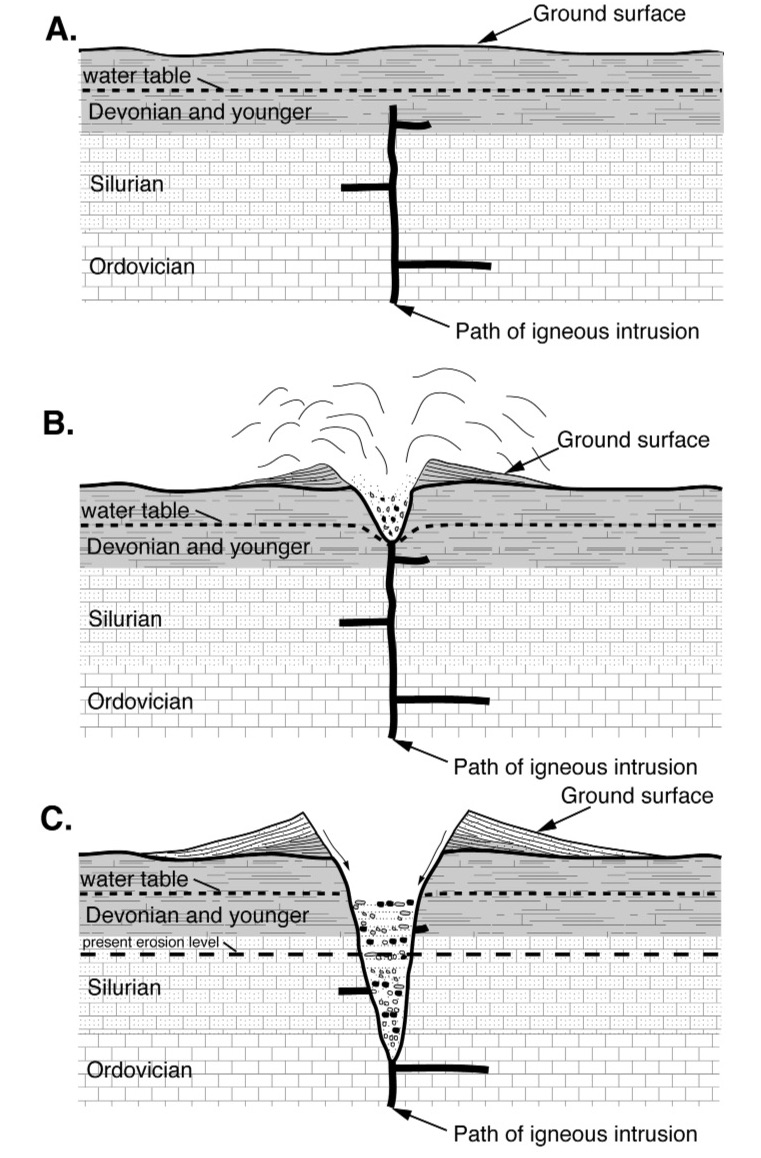|
Wall Rock
Wall rock is the rock that constitutes the wall of an area undergoing geologic activity. Examples are the rock along the neck of a volcano, on the edge of a pluton that is being emplaced, along a fault plane, enclosing a mineral deposit, or where a vein or dike is being emplaced. In volcanoes, wall rock can often become broken off the wall and incorporated into the erupted volcanic rock as xenoliths. These xenoliths are important to geologists because they can come from rock units that are otherwise not exposed at the Earth's surface. See also * Country rock (geology) In geology, country rock is the rock native to an area, in contrast to any intrusion of viscous geologic material, commonly magma, or perhaps rock salt (in salt domes) or unconsolidated sediments. Magma is typically less dense than the rock it ... ReferencesWordNet {{petrology ... [...More Info...] [...Related Items...] OR: [Wikipedia] [Google] [Baidu] |
Volcano
A volcano is commonly defined as a vent or fissure in the crust of a planetary-mass object, such as Earth, that allows hot lava, volcanic ash, and gases to escape from a magma chamber below the surface. On Earth, volcanoes are most often found where tectonic plates are diverging or converging, and because most of Earth's plate boundaries are underwater, most volcanoes are found underwater. For example, a mid-ocean ridge, such as the Mid-Atlantic Ridge, has volcanoes caused by divergent tectonic plates whereas the Pacific Ring of Fire has volcanoes caused by convergent tectonic plates. Volcanoes resulting from divergent tectonic activity are usually non-explosive whereas those resulting from convergent tectonic activity cause violent eruptions."Mid-ocean ridge tectonics, volcanism and geomorphology." Geology 26, no. 455 (2001): 458. https://macdonald.faculty.geol.ucsb.edu/papers/Macdonald%20Mid-Ocean%20Ridge%20Tectonics.pdf Volcanoes can also form where there is str ... [...More Info...] [...Related Items...] OR: [Wikipedia] [Google] [Baidu] |
Pluton (geology)
In geology, an igneous intrusion (or intrusive body or simply intrusion) is a body of Intrusive rock, intrusive igneous rock that forms by crystallization of magma slowly cooling below the surface of the Earth. Intrusions have a wide variety of forms and compositions, illustrated by examples like the Palisades Sill of New York (state), New York and New Jersey; the Henry Mountains of Utah; the Bushveld Igneous Complex of South Africa; Shiprock in New Mexico; the Ardnamurchan intrusion in Scotland; and the Sierra Nevada Batholith of California. Because the solid country rock (geology), country rock into which magma intrudes is an excellent thermal insulation, insulator, cooling of the magma is extremely slow, and intrusive igneous rock is coarse-grained (phaneritic). Intrusive igneous rocks are classified separately from extrusive igneous rocks, generally on the basis of their mineral content. The relative amounts of quartz, alkali feldspar, plagioclase, and feldspathoid is part ... [...More Info...] [...Related Items...] OR: [Wikipedia] [Google] [Baidu] |
Vein (geology)
In geology, a vein is a distinct sheetlike body of crystallized minerals within a rock. Veins form when mineral constituents carried by an aqueous solution within the rock mass are deposited through precipitation. The hydraulic flow involved is usually due to hydrothermal circulation. Veins are classically thought of as being planar fractures in rocks, with the crystal growth occurring normal to the walls of the cavity, and the crystal protruding into open space. This certainly is the method for the formation of some veins. However, it is rare in geology for significant open space to remain open in large volumes of rock, especially several kilometers below the surface. Thus, there are two main mechanisms considered likely for the formation of veins: ''open-space filling'' and ''crack-seal growth''. Open space filling Open space filling is the hallmark of epithermal vein systems, such as a stockwork, in greisens or in certain skarn environments. For open space fillin ... [...More Info...] [...Related Items...] OR: [Wikipedia] [Google] [Baidu] |
Dike (geology)
In geology, a dike or dyke is a sheet of rock that is formed in a fracture of a pre-existing rock body. Dikes can be either magmatic or sedimentary in origin. Magmatic dikes form when magma flows into a crack then solidifies as a sheet intrusion, either cutting across layers of rock or through a contiguous mass of rock. Clastic dikes are formed when sediment fills a pre-existing crack.Essentials of Geology, 3rd Ed, Stephen Marshak Magmatic dikes A magmatic dike is a sheet of igneous rock that cuts across older rock beds. It is formed when magma fills a fracture in the older beds and then cools and solidifies. The dike rock is usually more resistant to weathering than the surrounding rock, so that erosion exposes the dike as a natural wall or ridge. It is from these natural walls that dikes get their name. Dikes preserve a record of the fissures through which most mafic magma (fluid magma low in silica) reaches the surface. They are studied by geologists for the clues they ... [...More Info...] [...Related Items...] OR: [Wikipedia] [Google] [Baidu] |
Volcanic Rock
Volcanic rocks (often shortened to volcanics in scientific contexts) are rocks formed from lava erupted from a volcano. Like all rock types, the concept of volcanic rock is artificial, and in nature volcanic rocks grade into hypabyssal and metamorphic rocks and constitute an important element of some sediments and sedimentary rocks. For these reasons, in geology, volcanics and shallow hypabyssal rocks are not always treated as distinct. In the context of Precambrian shield geology, the term "volcanic" is often applied to what are strictly metavolcanic rocks. Volcanic rocks and sediment that form from magma erupted into the air are called "pyroclastics," and these are also technically sedimentary rocks. Volcanic rocks are among the most common rock types on Earth's surface, particularly in the oceans. On land, they are very common at plate boundaries and in flood basalt provinces. It has been estimated that volcanic rocks cover about 8% of the Earth's current land surface. ... [...More Info...] [...Related Items...] OR: [Wikipedia] [Google] [Baidu] |
Xenolith
A xenolith ("foreign rock") is a rock (geology), rock fragment (Country rock (geology), country rock) that becomes enveloped in a larger rock during the latter's development and solidification. In geology, the term ''xenolith'' is almost exclusively used to describe inclusion (mineral), inclusions in igneous rock entrained during magma ascent, emplacement and eruption. Xenoliths may be engulfed along the margins of a magma chamber, torn loose from the walls of an erupting lava conduit or explosive diatreme or picked up along the base of a flowing body of lava on the Earth's surface. A xenocryst is an individual foreign crystal included within an igneous body. Examples of xenocrysts are quartz crystals in a silica-deficient lava and diamonds within kimberlite diatremes. Xenoliths can be non-uniform within individual locations, even in areas which are spatially limited, e.g. rhyolite-dominated lava of Nii-jima, Niijima volcano (Japan) contains two types of gabbroic xenoliths which a ... [...More Info...] [...Related Items...] OR: [Wikipedia] [Google] [Baidu] |
Geologist
A geologist is a scientist who studies the structure, composition, and History of Earth, history of Earth. Geologists incorporate techniques from physics, chemistry, biology, mathematics, and geography to perform research in the Field research, field and the laboratory. Geologists work in the Energy industry, energy and mining sectors to exploit Natural resource, natural resources. They monitor environmental hazards such as earthquakes, volcanoes, tsunamis and landslides. Geologists are also important contributors to climate change discussions. History James Hutton is often viewed as the first modern geologist. In 1785 he presented a paper entitled ''Theory of the Earth'' to the Royal Society of Edinburgh. In his paper, he explained his theory that the Earth must be much older than had previously been supposed to allow enough time for mountains to be eroded and for sediments to form new rocks at the bottom of the sea, which in turn were raised up to become dry land. Hutton pub ... [...More Info...] [...Related Items...] OR: [Wikipedia] [Google] [Baidu] |
Country Rock (geology)
In geology, country rock is the rock native to an area, in contrast to any intrusion of viscous geologic material, commonly magma, or perhaps rock salt (in salt domes) or unconsolidated sediments. Magma is typically less dense than the rock it intrudes, widening and filling existing cracks, sometimes melting the already-existing country rock. The term "country rock" is similar to, and in many cases interchangeable with, the terms basement and wall rocks. Country rock can denote the widespread lithology of a region in relation to the rock which is being discussed or observed. Geologic settings Settings in geology when the term ''country rock'' is used include: Igneous intrusions When describing a pluton or dike, the igneous rock can be described as intruding the surrounding ''country rock'', the rock into which the pluton has intruded.Newfoundland and LabradorGlossary of Geological Terms Accessed June 2018. When country rock is intruded by a dike, perpendicular ... [...More Info...] [...Related Items...] OR: [Wikipedia] [Google] [Baidu] |
Wall Rocks
A wall is a structure and a surface that defines an area; carries a load; provides security, shelter, or soundproofing; or serves a decorative purpose. There are various types of walls, including border barriers between countries, brick walls, defensive walls in fortifications, and retaining walls that hold back dirt, stone, water, or noise. Walls can also be found in buildings, where they support roofs, floors, and ceilings, enclose spaces, and provide shelter and security. The construction of walls can be categorized into framed walls and mass-walls. Framed walls transfer the load to the foundation through posts, columns, or studs and typically consist of structural elements, insulation, and finish elements. Mass-walls are made of solid materials such as masonry, concrete, adobe, or rammed earth. Walls may also house utilities like electrical wiring or plumbing and must conform to local building and fire codes. Walls have historically served defensive purposes, with th ... [...More Info...] [...Related Items...] OR: [Wikipedia] [Google] [Baidu] |







